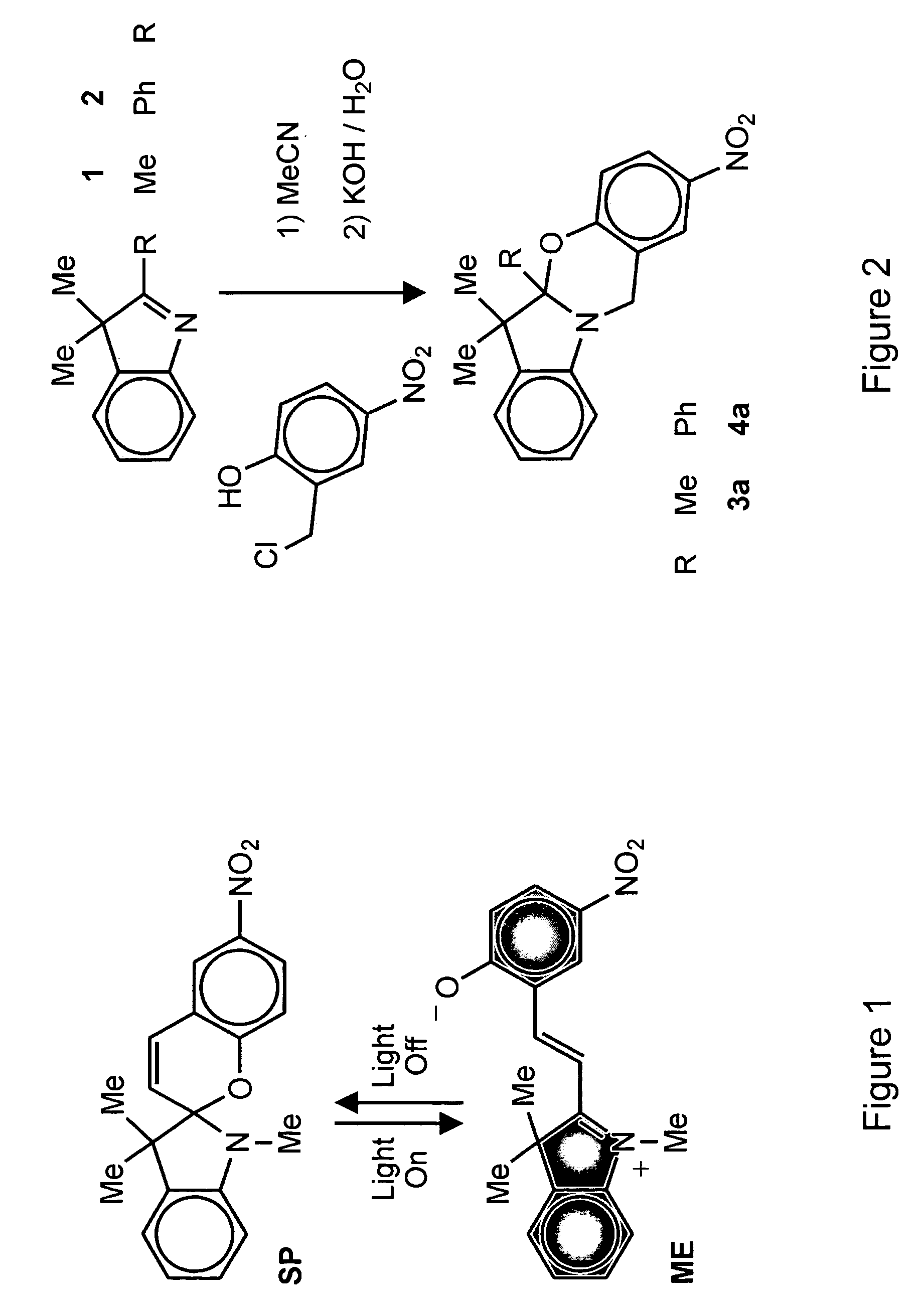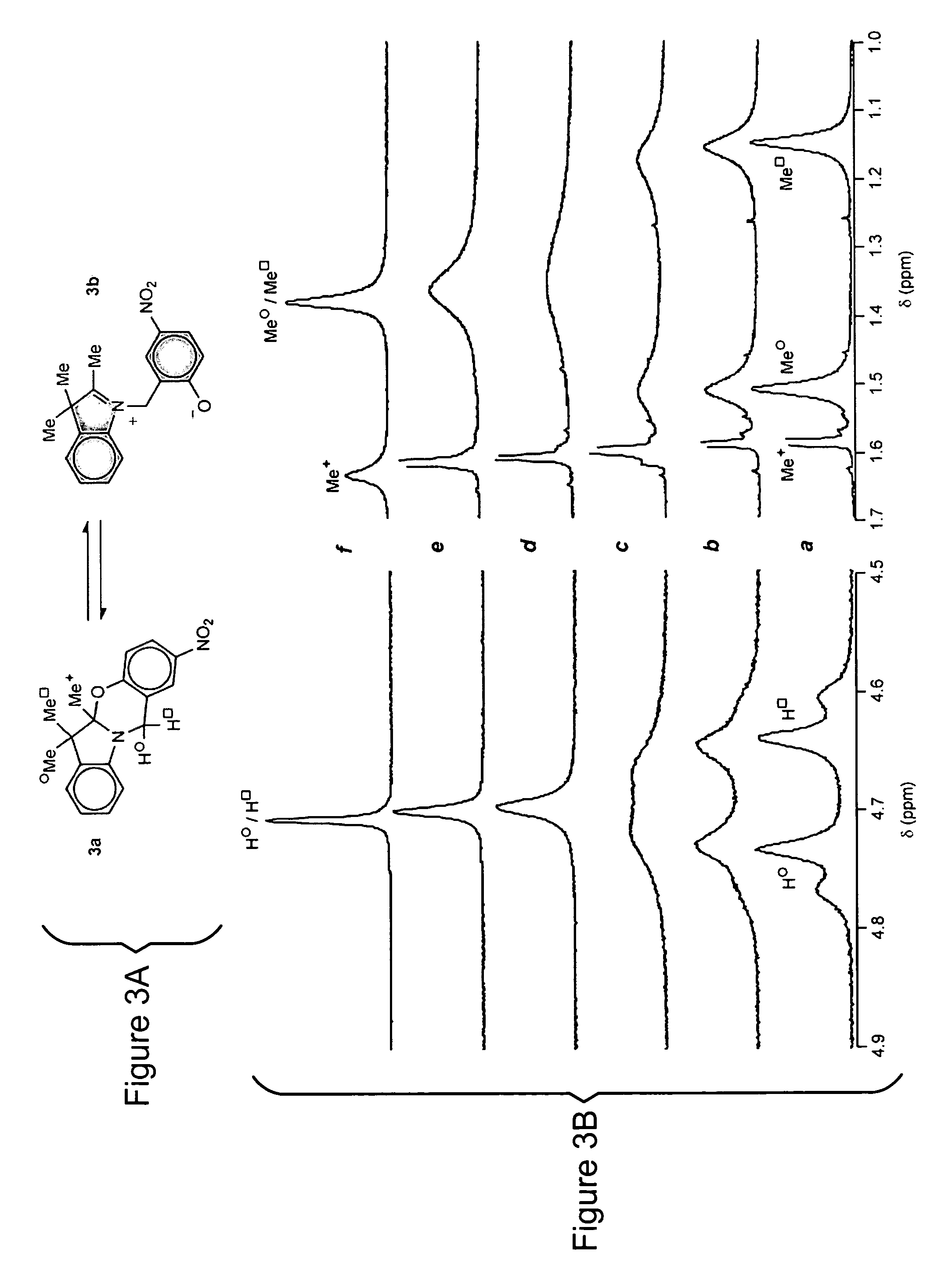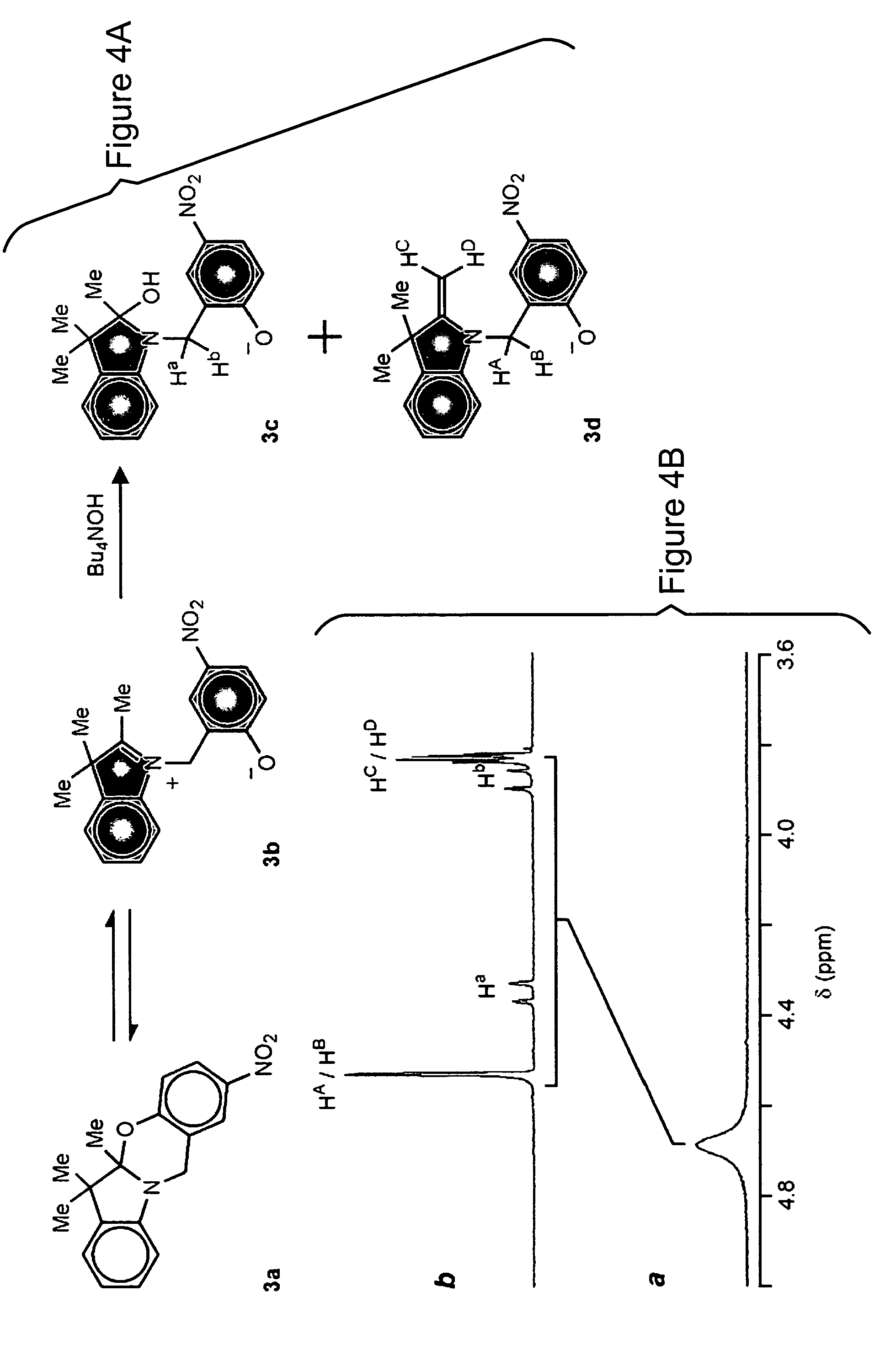Photochromic compounds based on ring opening and closing of a {1,3}oxazine compound
a technology of ring opening and closing and photochromic compounds, applied in the field of substituting 1, 3oxazine compounds, can solve the problems of delayed restoration of the starting state, at least two major limitations, and faster respons
- Summary
- Abstract
- Description
- Claims
- Application Information
AI Technical Summary
Benefits of technology
Problems solved by technology
Method used
Image
Examples
Embodiment Construction
[0033]The structural and electronic changes that accompany the light-induced transformation of photochromic compounds have suggested a wealth of applications over the past four decades. These compounds have emerged as convenient building blocks for constructing photoswitchable assemblies. In these systems, interconversion between the different states of a photochromic compound may modulate the optical properties of the overall assembly. The promise offered by photonic technology may be advanced by the novel photochromic compounds of the invention with the goal of developing innovative light-responsive materials for display, information processing, storage, therapy, and visualization.
[0034]Photochromic compounds change their structural and electronic properties in response to optical stimulation. The photogenerated state reverts to the starting state either thermally or after the application of a second optical stimulation differing in wavelength from the first. Thermally-reversible ...
PUM
| Property | Measurement | Unit |
|---|---|---|
| wavelength | aaaaa | aaaaa |
| wavelength | aaaaa | aaaaa |
| dihedral angle | aaaaa | aaaaa |
Abstract
Description
Claims
Application Information
 Login to View More
Login to View More - R&D
- Intellectual Property
- Life Sciences
- Materials
- Tech Scout
- Unparalleled Data Quality
- Higher Quality Content
- 60% Fewer Hallucinations
Browse by: Latest US Patents, China's latest patents, Technical Efficacy Thesaurus, Application Domain, Technology Topic, Popular Technical Reports.
© 2025 PatSnap. All rights reserved.Legal|Privacy policy|Modern Slavery Act Transparency Statement|Sitemap|About US| Contact US: help@patsnap.com



